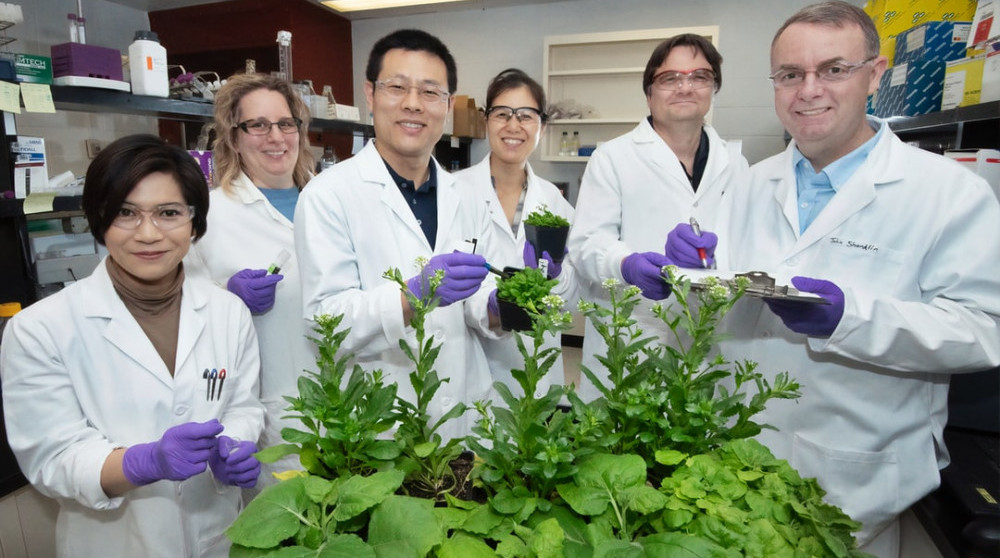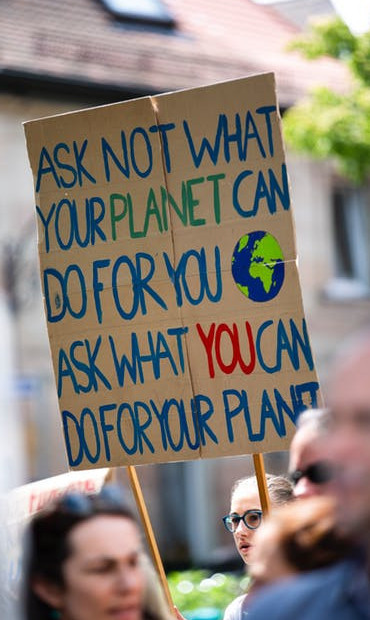 INTRODUCTION
INTRODUCTION
The threat to humanity, resulting from an increase in global temperature, has created very sharp divisions in our country. While the majority recognize the present danger, and believe that it has been caused by human activity, others believe that it is just a normal cycle that has occurred many times in the past and that nature will adapt.
But everybody agrees that the cause is an increase in Carbon Dioxide in the atmosphere, creating a greenhouse effect that results in an increase in global temperature. The sharp discussions center on possible solutions.
LIMIT USE OF CARBON FUELS
Replace carbon fuels with alternative energy sources such as solar and wind. However, climate change is a global problem that requires global solutions. Many developing countries have only coal available for their energy needs and can not be expected to eliminate this source of energy completely. There are many ways to limit carbon emissions such as:
– Design more efficient vehicles using natural gas in lieu of gasoline.
– Use advanced technology that can produce “clean” coal.
– Convert power plants from oil to natural gas.
– Sequester carbon emissions at the source of combustion in power plants using electrostatic precipitators.
WIND POWER
SOLAR POWER
NUCLEAR POWER
All the above solutions should be pursued. However, there is one method for removing Carbon Dioxide from the atmosphere that is not controversial and to which we can all agree.
Planting trees is not controversial and is one proven method to remove Carbon Dioxide from the atmosphere. While we continue to improve other methods, reforestation is something we can all support and implement now.
WHAT THE SCIENTISTS TELL US
Earth climate is very complex with many factors affecting the Earth temperature. However, basically the earth temperature is determined by a balance between the energy the Earth receives from the sun ( 240 watts/ square meter of Earth surface) and the output from the Earth from radiation ( which is proportional to the fourth power of the Earth surface temperature). If the radiation from Earth would be allowed to escape, then the balance of input and output would result in an Earth temperature of about 0 Degrees Fahrenheit. However, some of the radiation leaving the Earth is reflected back to Earth by certain gases in the atmosphere ( Carbon Dioxide, methane and water vapor). This reflected radiation elevates the Earth temperature. In the past, prior to the Industrial Revolution, the “normal” amount of Carbon Dioxide in the atmosphere, which reflected some radiation to Earth, resulted in a balance of temperature at about 60 Degrees Fahrenheit. This increase of temperature is what makes our planet habitable.” Normal” greenhouse is a good thing ! [5]
Our problem is that the additional Carbon emissions generated by human activities, continue to grow, and as a result, continue to increase the Earth’s surface temperature.
Another factor to consider is the so called atmospheric carbon cycle. The carbon in the atmosphere is constantly exchanging amounts with the carbon dissolved in the ocean water and the carbon present on land. The total carbon content in the atmosphere is approximately 720 gigatons ( one gigaton, Gt. is one billion metric tonnes).
The ocean carbon reservoir is about 39,000 Gt. The land carbon reservoir is about 2000 Gt ( 1500 Gt in the soil and 500 Gt in plants).
The exchange of carbon from the atmosphere with the carbon in the ocean is more or less in balance. About 90 Gt of carbon, in the form of carbon dioxide, are dissolved yearly in the ocean water. This amount, removed from the atmosphere, is balanced by the amount of carbon dioxide that escapes the ocean water, which is about 88 Gt. There is more or less a balance, although the amount exchanged varies with water temperature and ocean currents.
The exchange of atmospheric carbon with land carbon is something we can affect. The photosynthesis of plants remove 110 Gt of carbon yearly, while animal carbon dioxide from respiration and waste decay add about the same amount to the atmosphere. Adding plants would increase the amount of carbon removed from the atmosphere.
We can reduce carbon dioxide emissions by reducing combustion of carbon fuels. This is the main contributor to carbon emissions. We must do this. However, the next largest source of carbon dioxide emissions is from deforestation and land use. That is why scientists recommend carbon dioxide sequestration, by increasing afforestation (restoring trees in areas deforested many years ago) and reforestation ( replacing trees recently removed from existing forests ). Planting in these priority areas will provide the greatest benefits because they are proven locations that do not require water irrigation in addition to the normal rainfall in that location. Reversing deforestation has the added benefit of saving the habitat of many endangered species and protecting biodiversity.
CURRENT GLOBAL REFORESTATION PROJECTS
The importance of reversing global deforestation has been known for many years. Many scientific papers have been written examining where trees should be planted and what type. Fortunately the interest in the subject is accelerating and many new projects are being started.
For example in Europe we have seen a forest boom. Between 1990 and 2015, the area covered by forests and woodlands has increased by 90,000 square kilometers [1]. In November 2006, the United Nations launched the United Nations Environment Programme (UNEP) Billion Tree Campaign. According to the UNEP trees are the most effective and cheapest means of binding carbon dioxide, so the more trees there are growing on Earth, the better we can hope to mitigate the climate crisis.[2]
In 2011, the UNEP handed over the management of the Billion Tree Campaign to the Plant for the Planet Foundation which plants trees in the Mexico Yucatan Peninsula and has now grown to the Trillion Tree campaign, active in 73 countries.
Other organizations promoting reforestation are:
– americanforests.org ( including American ReLeaf, Forest-Climate Working Group (FCWG), U.S. Climate Alliance ) [4]
– the Canopy Project, part of the Earth Day Network. ( The Earth day Network has a goal of planting 7.8 billion trees in 2020)
Individual countries are also starting projects around the Globe.
 On June 22, 2013, Pakistan’s Sindh Forest Department set a Guinness World Record when 300 people planted 847,275 trees in 24 hours [3].
On June 22, 2013, Pakistan’s Sindh Forest Department set a Guinness World Record when 300 people planted 847,275 trees in 24 hours [3].
On July 11,2016, India eclipsed that record by planting 49.3 million tree saplings.
On July 29,2019,, Ethiopia mobilized a vast number of volunteers across the country to plant millions of trees as part of the Government’s “Green Legacy Initiative”. This initiative has a goal of planting 4 billion trees between May and October in the rainy season.
In 2015, 10 African countries launched the African Forest Landscape Restoration Initiative, which aims to restore 386,000 square miles of the continent’s land by 2030. [3]
Most recently the World Economic Forum in Davos, Switzerland, launched the 1t.org project to unite governments and businesses in a mass scale nature restoration that will restore and conserve 1 trillion trees around the world. In this Davos meeting the USA president Donald Trump (an earlier climate change skeptic) , committed the USA to this project.
CONCLUSION
There is hope. Reforestation projects are now being implemented across the Globe. The World Economic Forum also acknowledged the work of existing reforestation programs and pledged to help join all of these initiatives in a coordinated and global effort. According to the Forum, locking up carbon in the world’s forests can provide up to one third of the emissions reductions required by 2030 to meet the Paris climate agreement targets.

Carlos
Save the planet but start with clean indoor air so you can stay healthy for the cause. Click here to find out how you can improve your indoor air quality.
carlos@improvingindoorairquality.com
REFERENCES
[1] https://www.weforum.org/agenda/2019,,/07/forest-europe-environment
[2] https://www.weforum.org/agenda/2019,,/10/technology-trees-deforestation-environment-app
[3] https://www.atlasobscura.com/articles/ethiopia-world-record-trees-planted-deforestation
[4] https://www.americanforests.org/priorities/climate
[5] https://improvingindoorairquality.com/cap-and-trade-policies